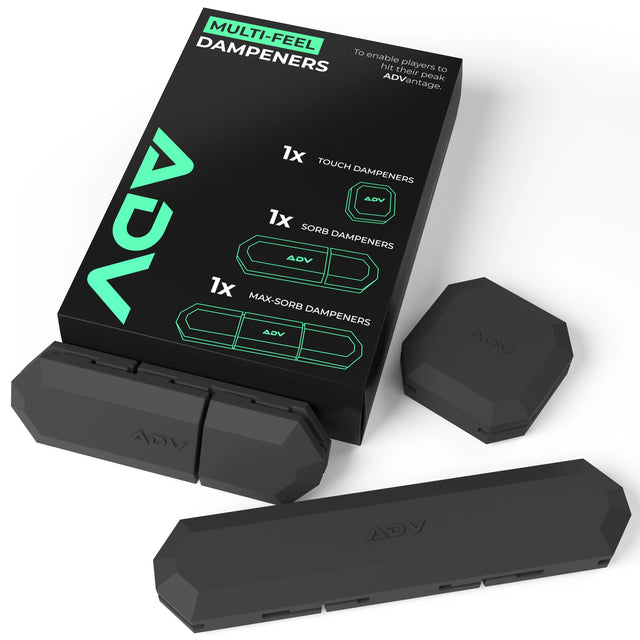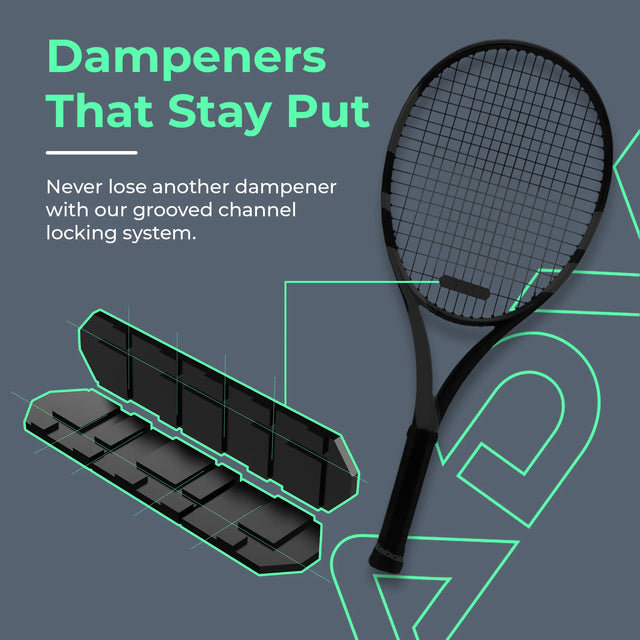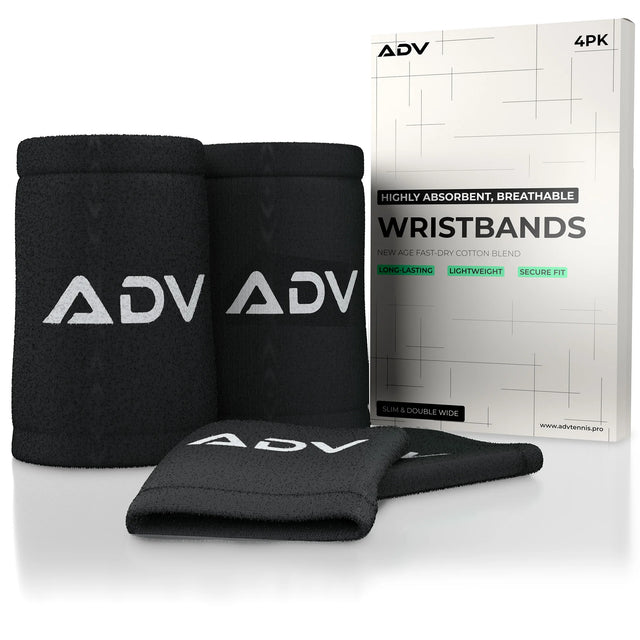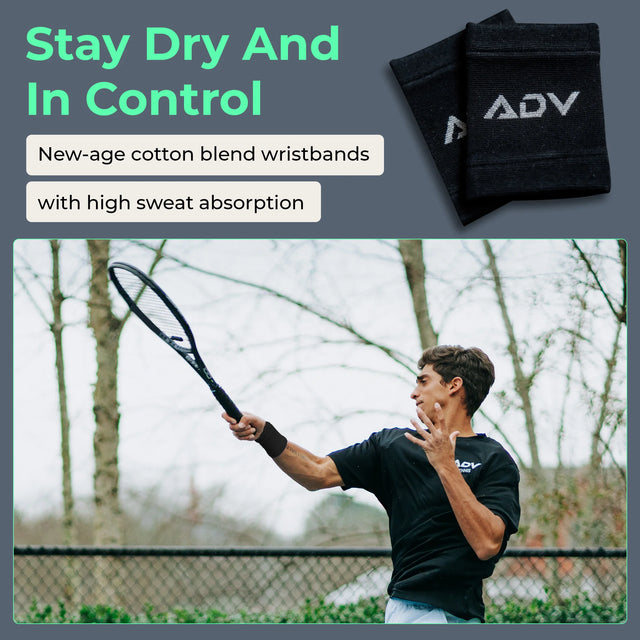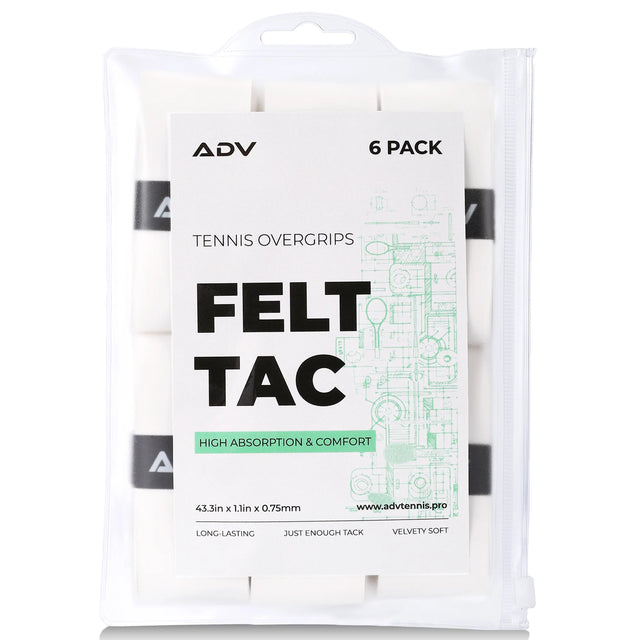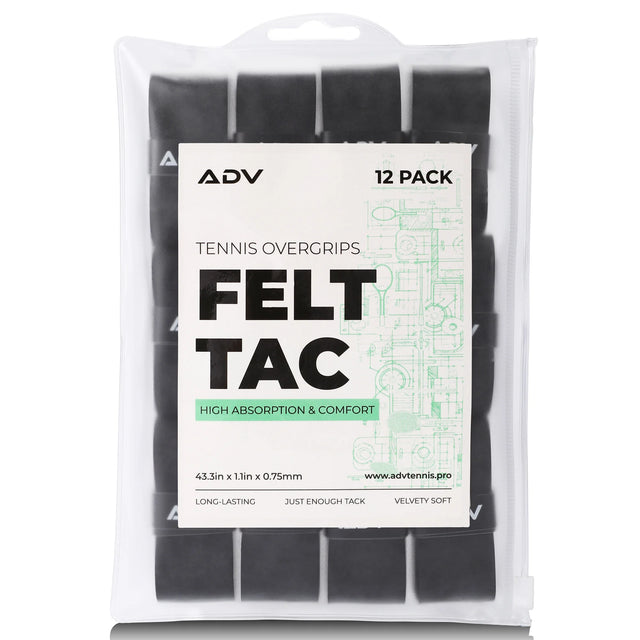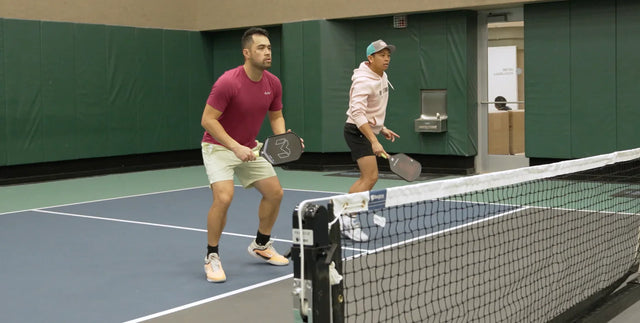The Science Behind Tacky Overgrips: Why Grip Matters
The quality of your grip on a tennis racket or pickleball paddle can dramatically affect your game's precision and power. Why grip matters in tennis is evident as a firm and stable grip allows for more controlled and powerful strokes. A good tacky overgrip enhances this control by offering a sticky, secure surface that helps prevent the racket from twisting in your hands during a swing. Stability is crucial for accurate shot placement and can make a substantial difference in high-stakes matches where precision is paramount. Furthermore, a reliable grip reduces the risk of injuries caused by the racket slipping or excessive grip pressure needed to maintain control.
The Science Behind Tacky Overgrips
Improves Grip and Stability
Engineered to enhance players' stickiness when they hold their rackets or paddles. This increased tackiness is crucial for maintaining a firm, non-slip grip during intense play. The surface of these overgrips is made to create a slight resistance against the skin of the palm, reducing the chance of the racket twisting or slipping during a forceful swing. A stable grip aids athletes in maintaining precise control over their movements, which is essential for executing strategic plays and accurate shots.
The Adhesive Properties and Material Composition
These grips are typically made from polyurethane, known for its excellent adhesive properties and comfort. The outer layer of the grip is specially formulated to be sticky to the touch yet durable enough to withstand the wear and tear of regular play. This combination of softness and stickiness ensures that the grip conforms comfortably to the player's hand while providing a reliable hold.

How Sweat, Temperature, and Friction Impact Performance
Sweat, temperature, and friction significantly impact the performance of sports overgrips. As players exert themselves, their hands may sweat, reducing the effectiveness of a normal grip. However, tacky overgrips are designed to provide a consistent grip even in wet conditions. Temperature changes can also affect the grip's tackiness; colder weather may make the grip feel harder, while warmth can make it too sticky. Manufacturers consider these factors to ensure optimal performance under various playing conditions.
Compared to Other Grip Types
Unlike basic grips, which might provide minimal absorption and poor moisture control, tacky grips ensure that the racket stays firmly in hand, reducing the risk of errors during critical points. These overgrips also tend to be thinner and more responsive, allowing players to feel the racket better as part of their extended reach, which is crucial for precise shot-making and effective play.
Performance Benefits of Tacky Overgrips
Enhancing Shot Precision and Racket/Paddle Control
A secure grip enables players to manipulate the racket or paddle with greater finesse, allowing for accurate placement and optimized spin on the ball. Precision plays a pivotal role during matches where strategic placement can effectively outmaneuver opponents. The consistent feedback provided by a high-quality tacky grip also helps players adjust their technique in real-time, enhancing overall performance.
Reducing Hand Fatigue and Improving Comfort
One of the significant benefits of durable tennis overgrips is the enhanced comfort and reduced hand fatigue they offer. These are designed to distribute the pressure evenly across the hand, minimizing the strain on any single point. This distribution helps prevent the onset of fatigue, allowing players to maintain a high level of play for extended periods. Additionally, the soft texture of the grips absorbs some of the shocks from the impact of the ball, further reducing the stress on hands and wrists during play.
Shock Absorption and Vibration Reduction
Effective tacky overgrips are essential for absorbing shock and reducing vibration transmitted through the racket or paddle. This feature is significant as it protects players from the potential discomfort and injury associated with repetitive impacts. By dampening vibration, tacky overgrips allow for a smoother experience, enhancing comfort and improving the player’s ability to stay focused and responsive during intense rallies.
Choosing the Right Overgrip for Your Playing Style
Factors to Consider
Many players underestimate the impact of their grip on gameplay, but the right selection can significantly enhance control, minimize slippage, and reduce hand fatigue. Below is a detailed breakdown of essential considerations:
- Texture: Some overgrips have a smooth surface, allowing for quick hand adjustments, making them ideal for players who frequently change grip positions. There are also perforated overgrips, which have tiny holes designed for enhanced moisture absorption, keeping your hands dry throughout extended matches. Textured or perforated grips can prevent slippage and improve control for players who sweat heavily. Finding the right balance between smoothness and tackiness is essential, as too much texture may feel uncomfortable, while too little may lead to an insecure grip.
- Thickness: Players who prefer a cushioned grip may opt for a thicker overgrip, which helps reduce hand fatigue and absorbs more shock from ball impact. This is particularly beneficial for players with joint issues or those who frequently experience discomfort in their hands or wrists. Conversely, thinner grips provide more direct feedback from the racket, allowing for greater precision and a better feel when making shots. A thinner grip is ideal for players who rely on finesse and want maximum responsiveness from their racket. If your racket handle feels too small, a thicker grip can help build up its circumference, making it easier to hold without excessive squeezing. However, if your racket handle is already at an ideal size, adding too much thickness can make it difficult to control.
- Durability: Frequent players, especially those who engage in intense practice sessions or tournaments, require a grip that can withstand continuous use without quick deterioration. Some overgrips are designed with reinforced materials to provide longevity, while others prioritize comfort but may wear out faster. Grips that are too soft or made from low-quality materials tend to peel or lose tackiness quickly, requiring frequent replacements. Playing conditions also affect grip durability. If you play in humid or wet environments, moisture-resistant grips will last longer than standard options. Players who sweat heavily should opt for overgrips with enhanced moisture absorption to prevent excessive wear. Some brands offer long-lasting, high-performance overgrips that balance durability with comfort, making them a worthwhile investment for those who play regularly. Keeping spare overgrips on hand ensures you can replace them as soon as signs of wear appear, maintaining consistent performance during every match.
Selecting the right overgrip requires balancing texture, thickness, and durability to match your playing style and conditions. Trying out different options and adjusting your preferences based on performance feedback can help you find the perfect overgrip that improves your control, precision, and endurance.
Tennis Racket Grips vs. Pickleball Overgrips
Tennis grips are generally designed to offer a balance between comfort and feedback, suitable for the varied strokes and powerful play typical of the game. On the other hand, pickleball overgrips tend to be thinner and less cushioned to allow for enhanced feel and control, which is crucial given the sport's focus on precision and finesse. Recognizing these differences is key to selecting the correct type of grip that matches the specific requirements of the racket or paddle used in either sport.

Where to Buy Tennis Racket Grips
These platforms offer a wide range of options, allowing players to compare different brands and types to find the perfect match for their needs. Online reviews and ratings can guide buyers in making informed decisions based on the experiences of other users. Furthermore, online retailers often provide detailed product descriptions and usage tips, making it more straightforward for customers to choose grips to enhance their court performance.
How to Apply Overgrips
Step-by-Step Guide to Proper Overgrip Application
Applying new tacky tennis overgrips correctly is crucial for maximizing its effectiveness and ensuring it provides the best possible performance during play. Here’s a guide to help you master this essential task:
- Prepare the Racket: Before applying a fresh overgrip, start by removing the old grip from your racket handle. If the handle has residual adhesive or dirt buildup, use a damp cloth or rubbing alcohol to clean it thoroughly. A clean handle ensures that the new overgrip adheres properly and doesn’t slip during use. Allow the handle to dry completely before proceeding. If you're replacing an overgrip instead of the base grip, take note of how the old one was wrapped—this can serve as a helpful reference when applying the new one. Checking the handle’s condition at this stage allows you to replace the base grip if necessary before adding the overgrip.
- Check the Overgrip: Unroll the new overgrip and identify its features before application. Most overgrips have a tapered end and an adhesive strip that helps secure the starting point. Some brands also include a protective film on the grip that needs to be removed before application. Understanding which side should face outward is crucial, as applying the grip incorrectly could result in discomfort or reduced performance. Check the texture and feel of the grip—some are designed for extra cushioning, while others prioritize a tacky feel for enhanced control. If your overgrip has perforations, ensure the holes align correctly to allow maximum sweat absorption.
- Starting the Wrap: Begin wrapping the overgrip from the butt cap of the racket handle. Position the tapered end at the base, pressing it firmly to secure it. Some players prefer to wrap clockwise or counterclockwise, depending on whether they are right-handed or left-handed. Consistency is key—start with an angled wrap to ensure a tight fit and avoid gaps. As you progress up the handle, make sure to overlap about one-third of the grip width to provide even coverage. The wrap should feel smooth and consistent, with no creases or uneven layers.
- Maintain Tension: Keeping the right amount of tension on the overgrip is crucial for a professional finish. Pulling too tightly can cause the grip to stretch excessively, making it too thin and reducing its durability. On the other hand, wrapping too loosely can lead to bubbles or shifting during play, affecting comfort and control. The best approach is to maintain a firm but controlled tension throughout the wrapping process. If needed, adjust the wrap slightly as you go to correct any inconsistencies. Ensuring an even wrap helps maintain the original shape of the handle while maximizing grip effectiveness.
- Finishing the Wrap: When you reach the top of the handle, you may need to trim the excess overgrip to ensure a clean finish. Using a pair of scissors, cut the grip at an angle so that it aligns neatly with the handle’s end. This helps avoid bulky edges that might interfere with your hand placement. Be careful not to leave any loose ends, as these can unravel over time. At this stage, take a moment to check that the grip feels smooth and secure, making any minor adjustments if needed.
- Secure with Finishing Tape: Most overgrips include a finishing tape that secures the final edge of the grip. Wrap this tape firmly around the top of the handle, pressing it down to ensure a tight seal. This prevents the overgrip from loosening during play, allowing it to stay in place even with intense use. If your overgrip doesn’t include tape, you can use electrical tape as an alternative. Make sure the pickleball paddle grip tape is applied evenly and doesn’t leave any rough edges that could peel off over time.
Mastering this process allows you to customize your racket to your preferences, giving you an edge over your competition. Whether you’re a beginner or an experienced player, learning the correct technique for overgrip application is an essential skill that enhances your overall gameplay.
Signs That It’s Time to Replace Your Overgrip
Knowing when to replace your overgrip can help maintain optimal performance and comfort. Signs of wear, such as fraying, noticeable smoothing of the grip surface, or a loss of tackiness, indicate it's time for a change. Also, suppose the grip starts to unravel, or you notice your hand slipping more frequently. In that case, these are clear indications that the overgrip no longer provides the necessary performance qualities for effective play.
Best Practices for Keeping Your Overgrip in Top Condition
To extend the life and maintain your tacky overgrips performance, it’s important to follow some best practices. Store your racket in a cool, dry place to prevent the overgrip from becoming too brittle or overly tacky. After playing, wipe down the grip with a dry cloth to remove sweat and moisture. This simple step helps to preserve the grip's properties and prevent premature deterioration. Regularly inspect your grip for signs of wear and replace it as needed to ensure that your racket remains in the best possible condition for your next game.

The right grips for tennis players complement your playing style and are an essential tool for elevating your game. With the advancements in grip technology and the increasing availability of specialized products, players have never been better positioned to find the perfect match for their needs. Whether you're a casual enthusiast or a professional athlete, taking the time to choose and care for your overgrip can lead to noticeable improvements in performance and enjoyment of the sport.


